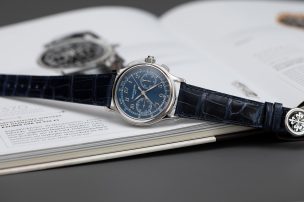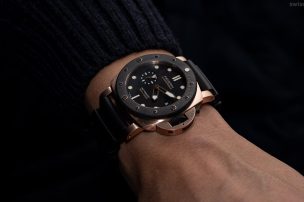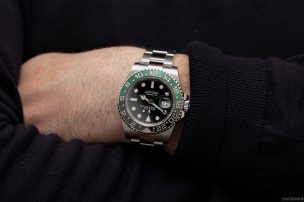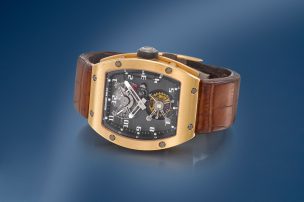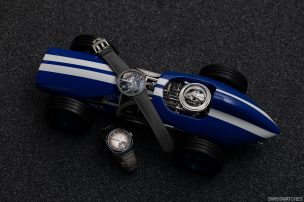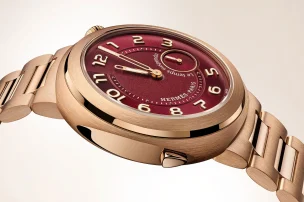
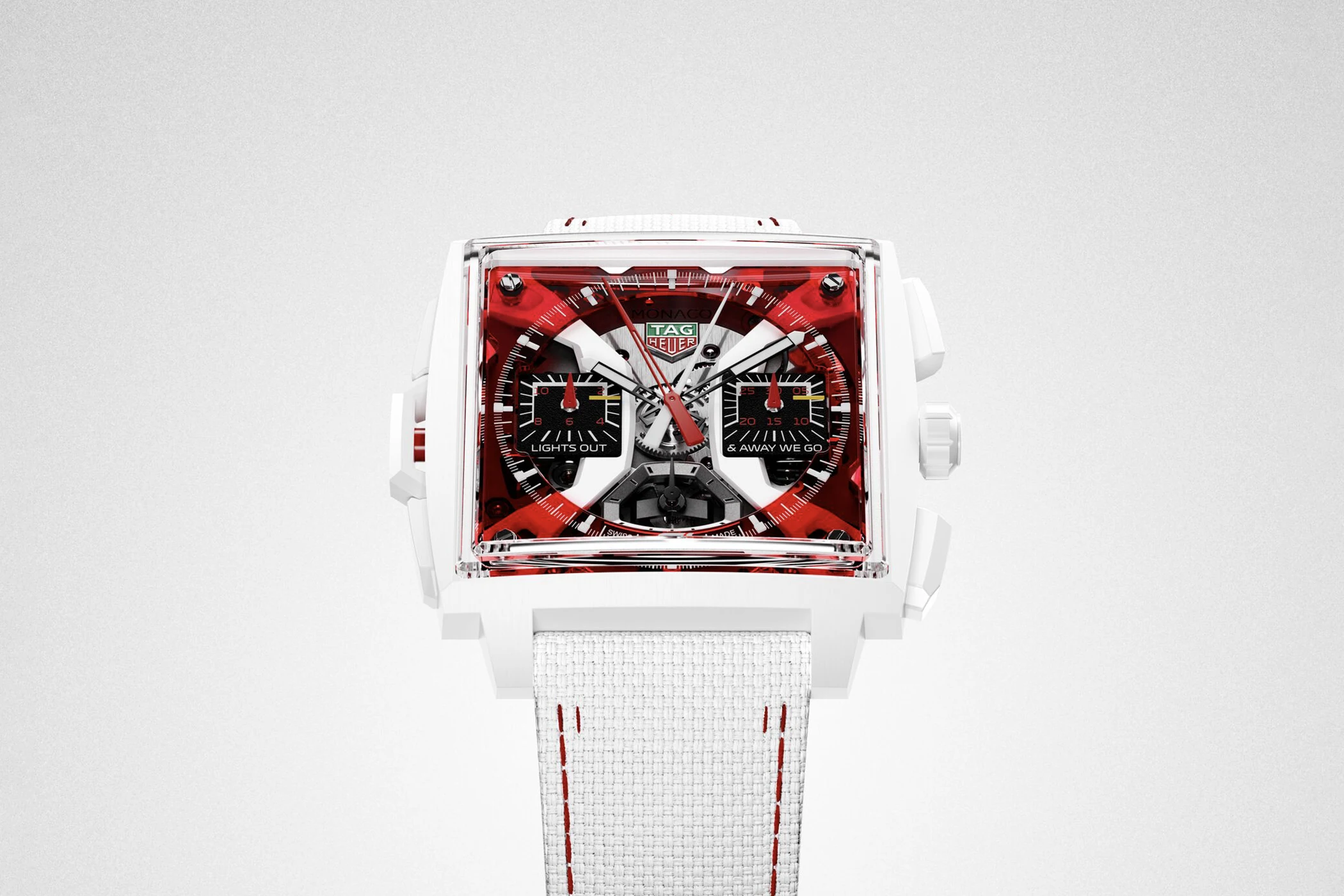
W&W 2025: TAG Heuer Monaco Split-Seconds Chronograph | F1
On 2 October 2024, what had long been the subject of speculation was finally confirmed: LVMH and Formula 1 officially announced a new partnership. In a year that sees Formula 1 celebrating its 75th anniversary, LVMH gains the opportunity to bring its portfolio of 75 brands into the pinnacle of motorsport – and to grant one of them a particularly visible role: TAG Heuer.
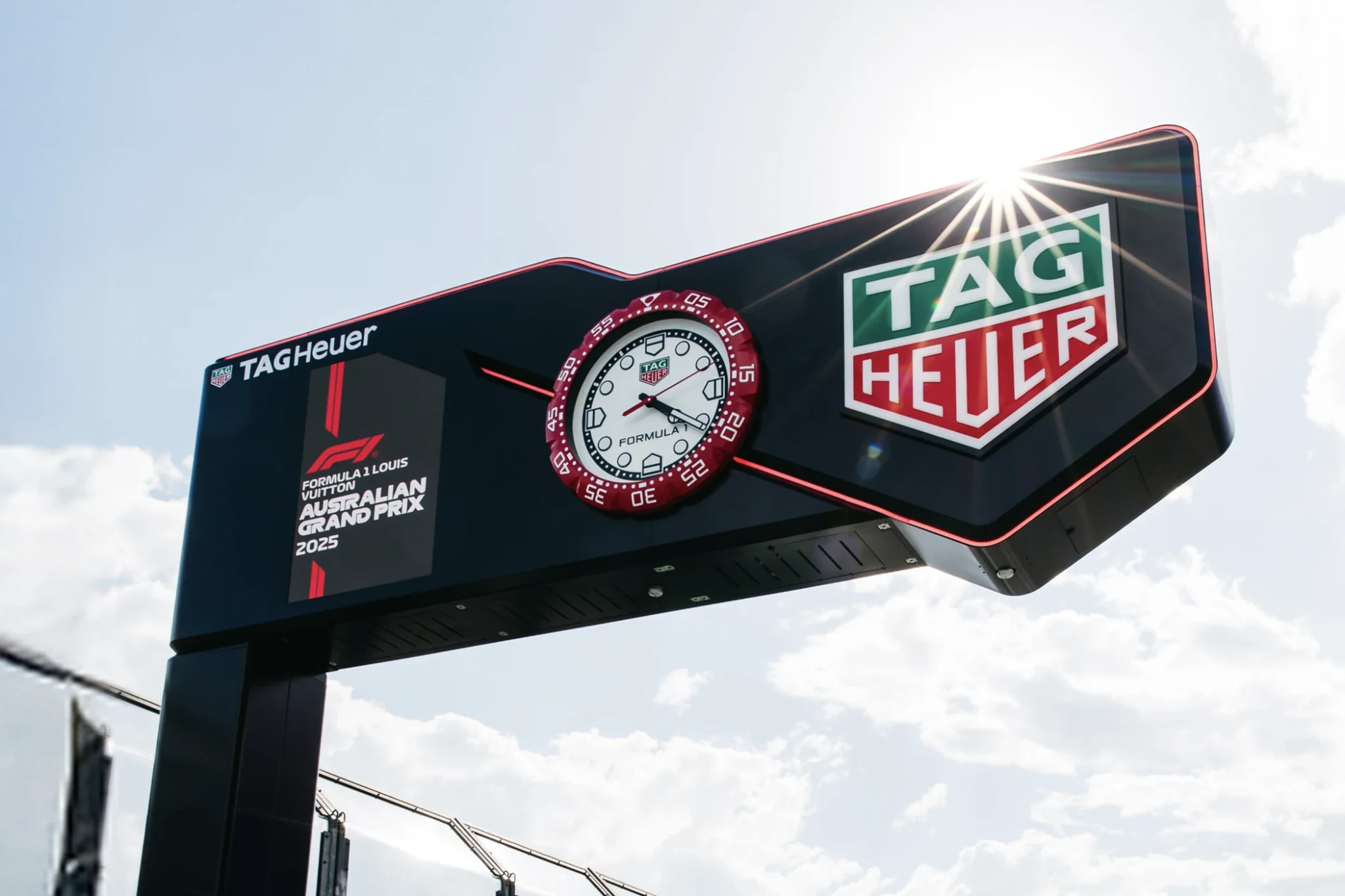
With its return to Formula 1, TAG Heuer is rekindling a partnership that is significant in more ways than one. As early as 1969, Heuer became the first luxury watchmaker to sponsor a Formula 1 driver – Jo Siffert – whose logo also appeared on a racing car. In 1971, Heuer developed the Le Mans Centigraph for Scuderia Ferrari – a highly precise timing instrument of its era. And following the brand’s acquisition by the TAG Group, TAG Heuer went on to serve as the official timekeeper of Formula 1 from 1992 to 2003.
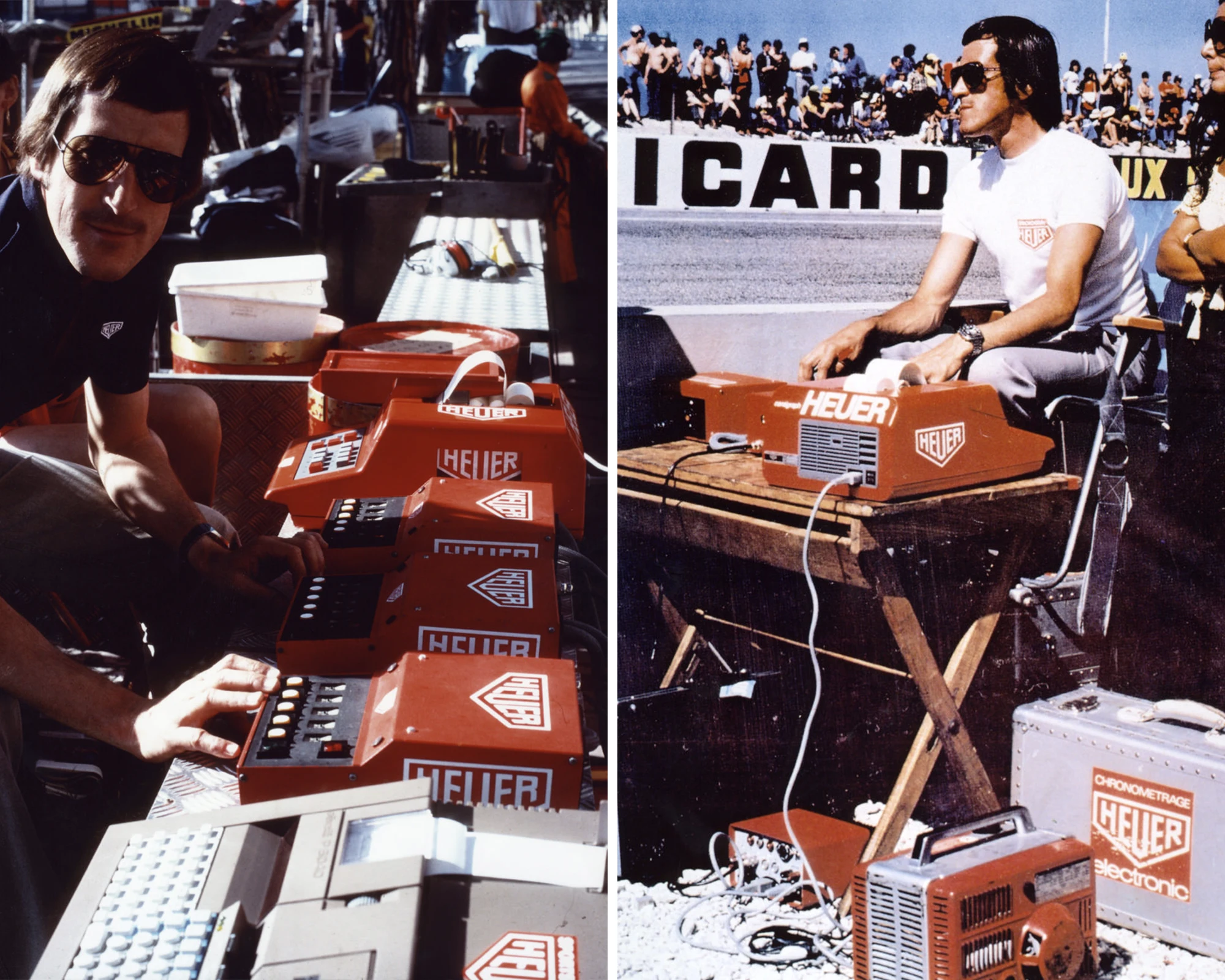
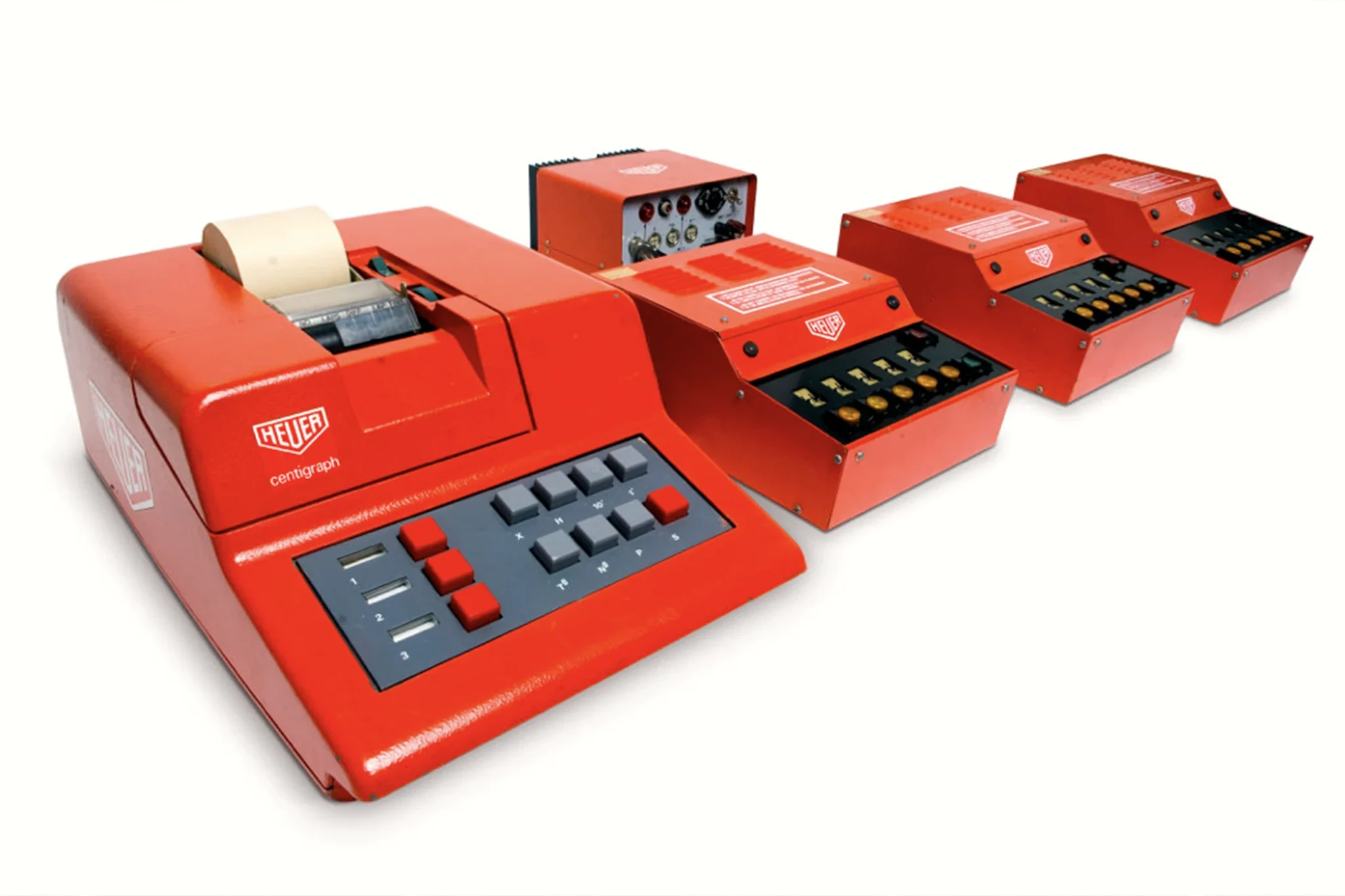
Now, the brand returns to this legacy – and celebrates its renewed role as official timekeeper of Formula 1 with a very special model: the TAG Heuer Monaco Split-Seconds Chronograph | F1. Here’s everything you need to know about the watch, limited to just ten pieces.
The Significance of the Monaco for TAG Heuer
A widely held belief among watch enthusiasts is that a timepiece is always more than the mere sum of its parts – that the ensemble of components is, in fact, capable of telling a story. It is about more than just time: a watch can speak of craftsmanship, exceptional materials, or cultural reference points with which it is intrinsically associated. As the TAG Heuer model most deeply rooted in the world of motorsport, the Monaco stands out as one of those rare timepieces that embody this idea.

Launched in 1969 – the very same year TAG Heuer entered into its first partnership with Formula 1 – the Monaco became the world’s first waterproof, square-cased automatic chronograph wristwatch, and evolved into one of the brand’s most important models. Between the silver screen and the racetrack – whether through Steve McQueen, who wore the watch in the 1971 film Le Mans, or other notable personalities such as Sammy Davis Jr. and Stanley Kubrick – the Monaco and its iconic square case established their status as a timekeeping icon, continuing to shape TAG Heuer’s brand identity to this day.

With the brand’s renewed partnership with Formula 1, the Monaco is once again set to experience a new dawn – one that is likely to be explored through numerous variations and special editions. It begins with the Monaco Split-Seconds Chronograph, limited to just ten pieces, combining a white ceramic case with a striking red dial.
The Case
The case of the Monaco, where protection, mechanical integration and functional control converge, has always culminated in its iconic square shape. With the new Monaco Split-Seconds Chronograph, the brand lends this form a bright, contemporary appearance by presenting it in radiant white ceramic. Unlike moulded ceramic cases, every individual component here has been precision-machined.
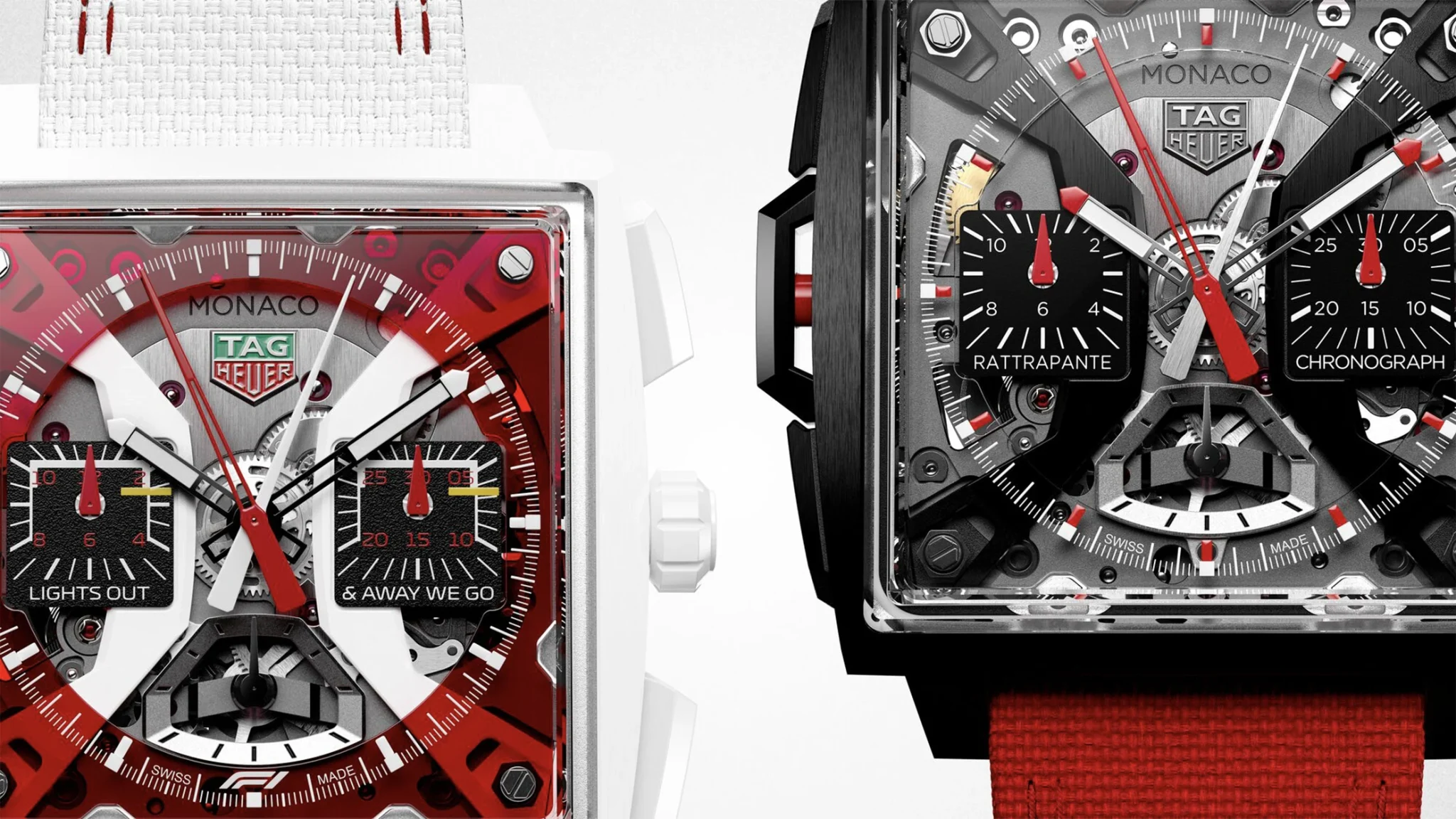
The Monaco Split-Seconds Chronograph, at the time the lightest TAG Heuer chronograph ever produced, was first unveiled at Watches and Wonders 2024 – sending a clear message that the brand intends not only to maintain its iconic line, but to advance it technically as well. This ambition becomes evident in the complex operation of the split-seconds chronograph, which requires both sides of the case to be engaged. On the right-hand side, at 2 and 4 o’clock, two chronograph pushers are positioned. The pusher at 2 o’clock starts the white chronograph hand and stops both chronograph hands. The pusher at 4 o’clock then resets both hands. The red rattrapante hand, meanwhile, is controlled by a dedicated pusher on the opposite side at 9 o’clock. This is framed by two pusher guards located at the 8 and 10 o’clock positions.

TAG Heuer ensures the case reaches its full aesthetic potential by hand-finishing every visible edge, curve and surface. The case diameter measures 41 mm, while the thickness stands at 15.2 mm. The watch is also water-resistant to 30 metres. The design is rounded off by a polished crown at 3 o’clock, adorned with a red-and-green TAG Heuer logo.
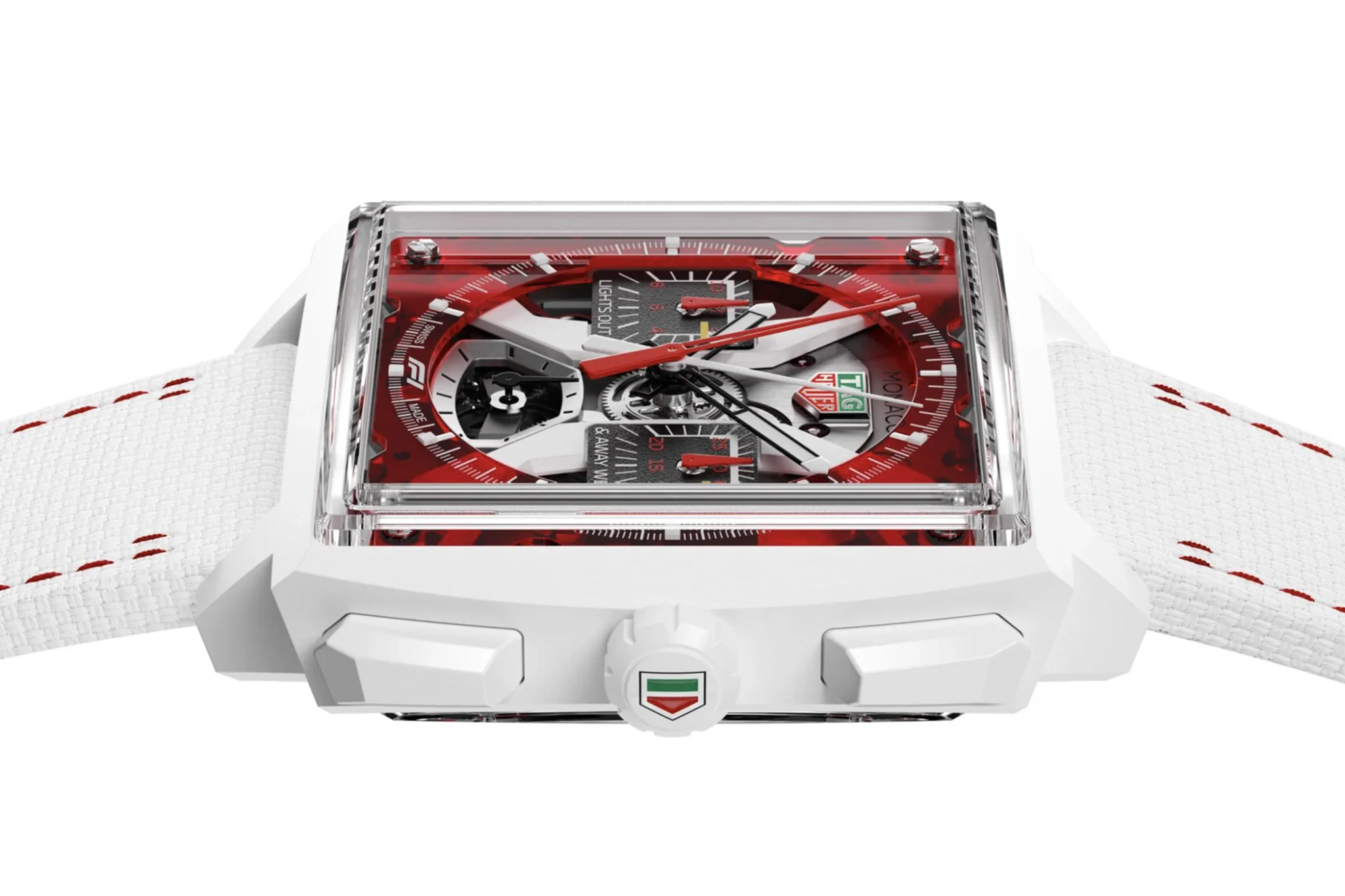
The Dial
The dial, by contrast, takes a distinctly more vivid direction. One of its most defining design elements is the use of signal red – a colour that symbolises the very essence of Formula 1: a blend of dynamism and energy. At the same time, it draws the viewer’s gaze directly towards the visible centre of the dial. There, framed by white ceramic bridges, sit the openworked hour and minute hands, above which rise the white lacquered chronograph hand and the red lacquered rattrapante hand.

These are accompanied by the chronograph minute and hour counters at the 3 and 9 o’clock positions. Their textured surfaces emulate asphalt and are accented by white and yellow starting lines, as well as Formula 1’s official typeface – all intended to evoke the visual language of motorsport. The counters are further enriched by a quote from British commentator David Croft: “LIGHTS OUT & AWAY WE GO.”
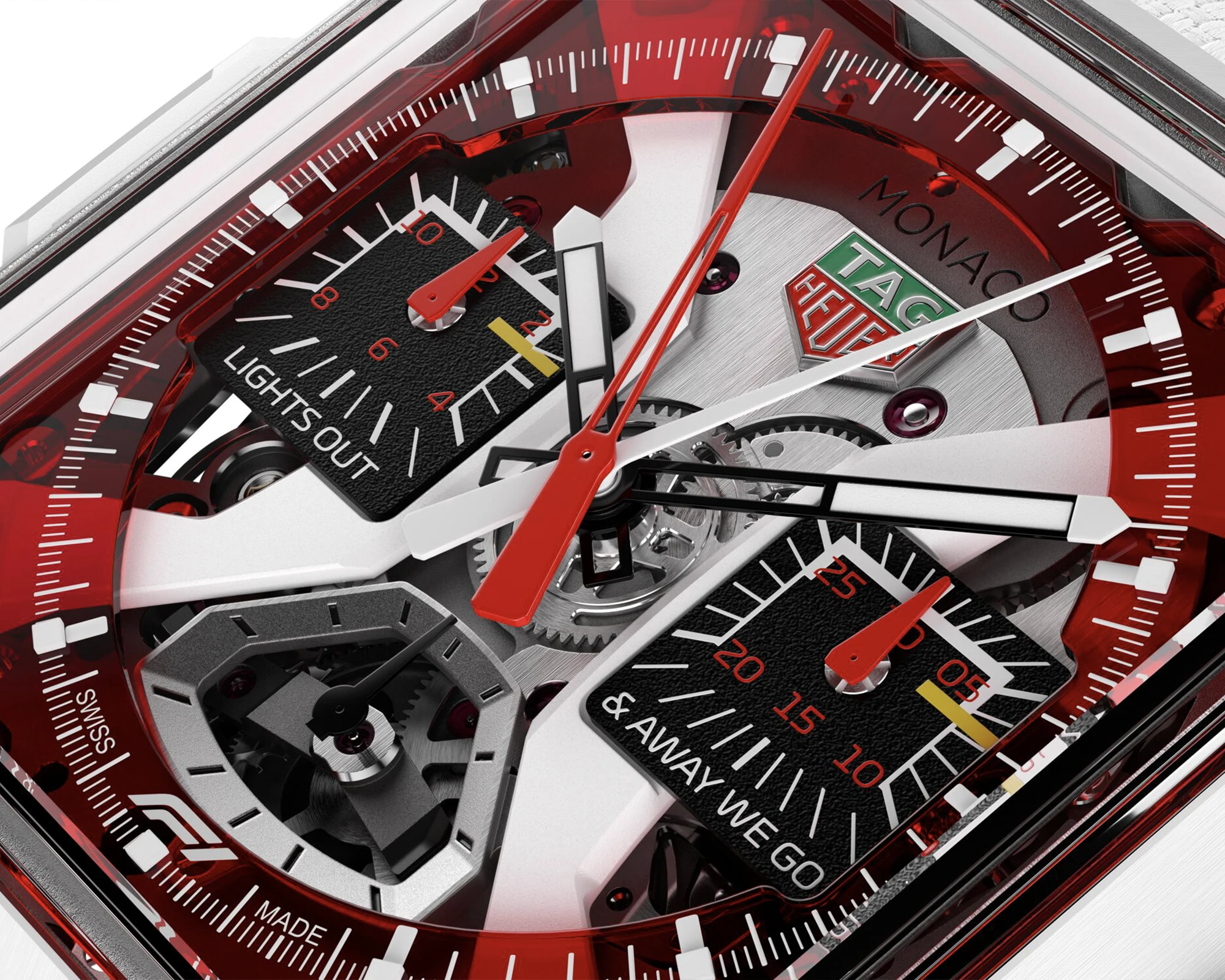
Finally, the dial is completed by a small seconds display at 6 o’clock, featuring a hand crafted from black gold. Opposite it, at 12 o’clock, sits a TAG Heuer shield – individually hand-lacquered on each of the ten pieces. Yet this is not the only logo to be found on the dial: just below the small seconds sits a discreet F1 emblem, subtly rounding off the racing-inspired aesthetic.
The Movement
Beneath the dial lies the TH81-00 calibre, crafted by movement manufacturer Vaucher Manufacture Fleurier, which made its debut alongside the first Monaco Split-Seconds Chronograph released the previous year. At its heart is a split-seconds mechanism – also known as a rattrapante or double chronograph – which enables the measurement of two separate time intervals simultaneously, such as the lap times of two Formula 1 cars. Beating at a frequency of 5 Hz (36,000 vibrations per hour), the movement offers a power reserve of up to 65 hours (or approximately 55 hours when the chronograph is in use) and is constructed from lightweight materials such as titanium.
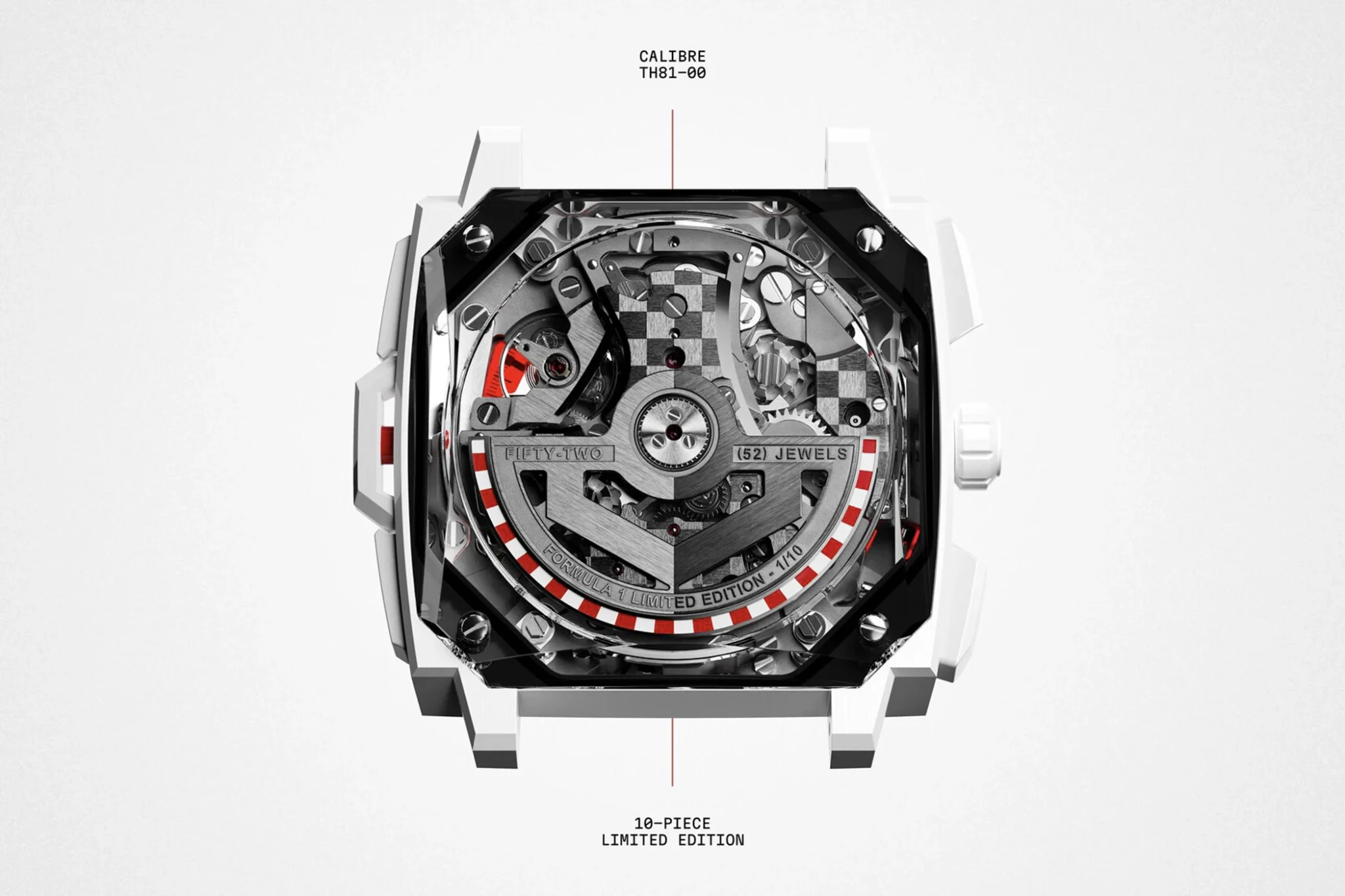
Particularly striking are the movement’s decorative finishes, which can be admired through the sapphire crystal caseback. With bridges styled like chequered flags and a red-and-white rotor inspired by Formula 1 kerbs, the same motorsport-inspired design language that defines the dial continues seamlessly into the movement. The watch also introduces a completely new approach to the caseback for TAG Heuer. Unlike conventional designs, which feature only a sapphire crystal viewing window, this caseback is crafted entirely from sapphire. The thick sapphire crystal is secured to the case by four screws.
Price & Availability
Only ten individually numbered pieces of this timepiece will be produced. The new TAG Heuer Monaco Split-Seconds Chronograph | F1 is scheduled for delivery from the fourth quarter of 2025 – with a recommended retail price of CHF 155,000.
